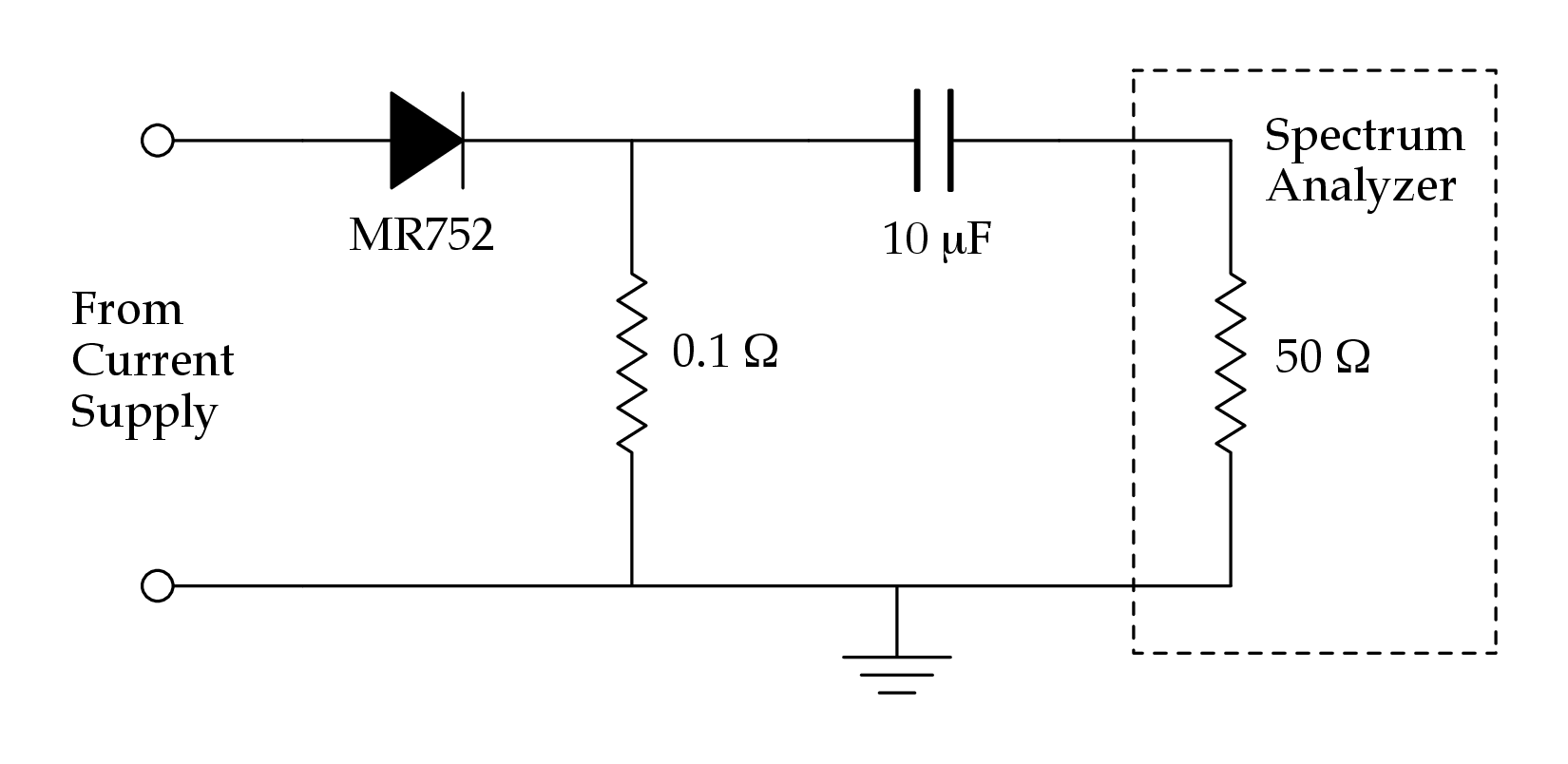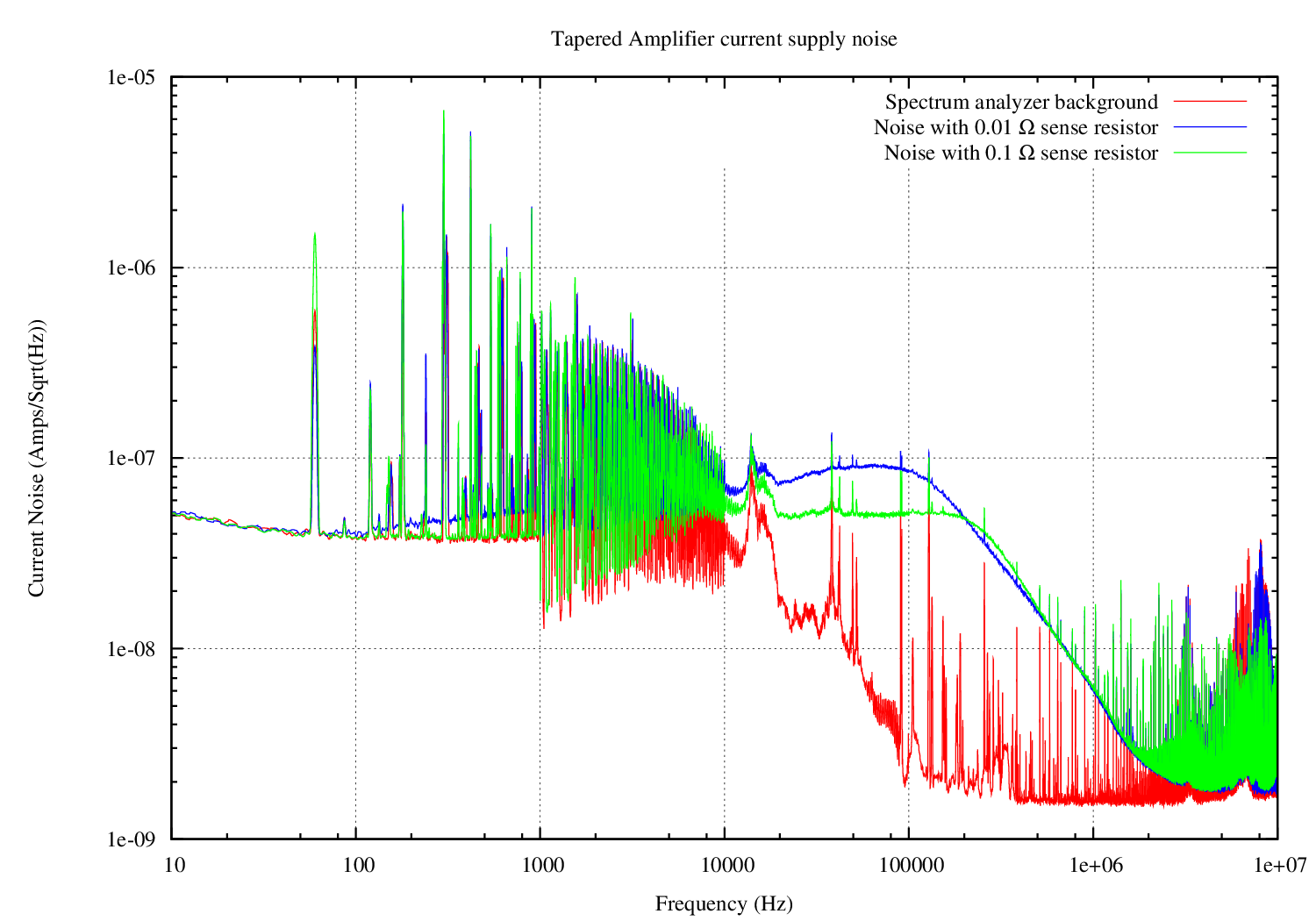Current supply noise, integrated from 10 Hz to 10 MHz: 17.8 μA, rms
We measure the current noise of our TA supply circuit operating at 2 A. To do this we use a 0.1Ω resistor to act as a current-to-voltage converter, and monitor the power fluctuations on a specrum analyzer through a DC-block (10μF capacitor). (See figure below.) To additionally protect the spectrum analyzer, we use a zener diode which has a breakdown voltage that is smaller than the max input voltage.

We convert the measured power spectrum to a current noise spectrum and plot the result below. We increased the value of the circuit's output sense resistor to reduce noise introduced by a gain stage in the stabilization loop, and this improvement is evident in the spectra. Also plotted is the ''noise floor'' of this measurement, which amounts to shorting the input to the DC-block and measuring residual power fluctuations in the system.

For the discussion that follows, we refer only to the current supply with the 0.1 Ω sense resistor (green trace above). Integrating the noise spectrum gives the rms current noise, and we find, for the bandwidth plotted above, rms noises of 36.0 μA and 18.2 μA for the current controller and background, respectively. Subtracting the background rms current fluctuations gives an rms current noise of 17.8 μA for our controller over this frequency band.
We should mention that it's hard to compare this number to the noise of commercial current controllers since typically it isn't clear how they are evaluated (see, for instance, the Thorlabs LD3000R precision current driver, claimed to have 12 μA rms current noise while operating at 1 A). The best way to compare would be to conduct the investigation described above on commercial controllers as well.
Incidentally, the rms current noise of the 0.01 Ω sense resistor (blue trace) is 24.7 μA, confirming the improvement of swapping the sense resistor.